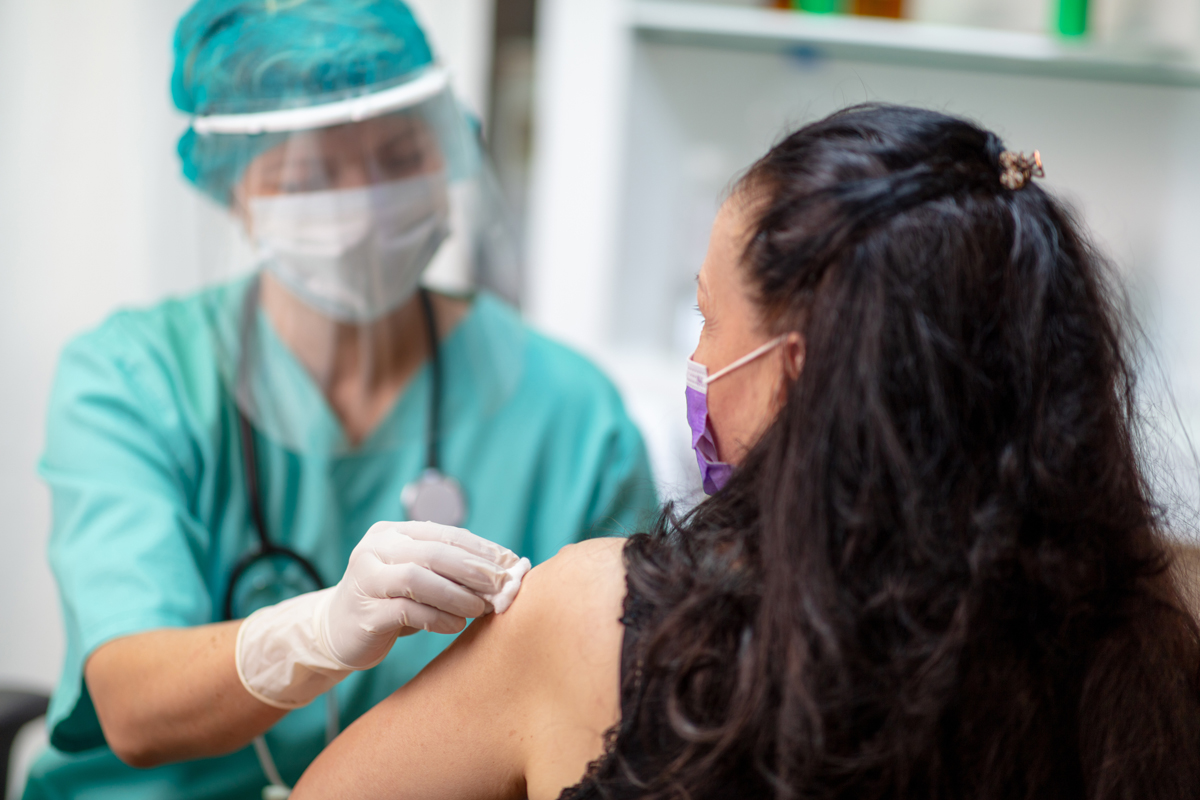Lies and misinformation campaigns have fueled the COVID-19 pandemic that has killed more than 618,000 Americans — and counting.
Social media posts have promulgated conspiracy theories about the origins of the coronavirus, the severity of the pandemic, treatment options, and, of course, vaccines.
Earlier this year when vaccines were in short supply, many people were desperate to get vaccinated. They stayed up all hours, constantly refreshing their internet browsers in hope of nabbing an elusive appointment as soon as a slot opened up. We seemed on track to reach the goal of 70% of Americans vaccinated by the Fourth of July. But by early summer, with supply abundant in the U.S., vaccination efforts had stalled. While there are many reasons why people may be hesitant to get a COVID-19 vaccine, online misinformation is a driving factor. And that misinformation preys on existing fears: an erosion of trust in government, medicine, and social institutions leaves people searching for answers and susceptible to lies and conspiracies.
With the Delta variant now dominant and COVID cases rising again, it is more important than ever to ensure that as many people as possible are vaccinated. We have seen progress in New York City in the last couple of weeks, thanks in part to financial incentives to get the shot; a looming vaccine mandate for patrons of NYC bars, restaurants, and gyms; and new requirements on City workers. This combination of carrots and sticks seems to be working to further boost vaccination rates in the City, with more than 5 million residents having had at least one dose and 4.6 million fully vaccinated.
But more needs to be done, and that includes inoculating people against the scourge of vaccine misinformation. Despite the seeming vastness of the online world, it is possible to do so. Recent research shows that only 12 people and organizations are responsible for about two-thirds of vaccine misinformation on social media. These superspreader sources of misinformation are undermining public confidence in our best defense against COVID-19: safe and effective vaccines. Their content has been shared millions of times and has in some cases even been reported in local media outlets — or on websites masquerading as independent news publications — as credible.
Efforts like the Public Good Projects’ Project VCTR are tracking and responding to vaccine-related social media conversations, but, as a new report from the U.S. Surgeon General put it, combating vaccine misinformation will require a “whole-of-society effort.” What might a coordinated and effective effort entail?:
- Social media sites must act with urgency to eradicate vaccine misinformation and weed out rogue accounts. Sites like Facebook and Twitter use highly sophisticated algorithms to deliver or block content. Better enforcement of their own standards will help.
- Policymakers should consider every option to promote online platforms’ accountability and protect people during a public health emergency. Federal legislation has been introduced to do just that, by stripping social media sites of liability protections if their platforms are used to spread misinformation.
- The government can also enlist trusted messengers to reinforce the safety and efficacy of vaccines. For example, the White House is working with pop stars and other influential figures on TikTok to reach young people with accurate information about vaccines. (I wasn’t aware of Olivia Rodrigo until she teamed up with President Biden and Dr. Fauci to promote vaccines, but she’s extremely influential among young people, who have the lowest vaccination rates of any eligible age group.)
- Health care providers can serve as trusted messengers. Research shows that people trust their own doctors and pharmacists for accurate information about COVID-19 vaccines. The de Beaumont Foundation and the Association of State and Territorial Health Officials have developed a useful guide for health care professionals to address patients’ concerns with effective messaging. And we can all encourage people who are hesitant about getting vaccinated to talk through their concerns with a trusted health care provider.
- Academic institutions and community-based organizations can help spread the word. For example, CUNY School of Public Health has launched the New York State Vaccine Education and Adoption Project. The project is working with community-based organizations in New York City and surrounding counties to address vaccine literacy and hesitancy. And the Community Health Care Association of New York State (CHCANYS) is working with health centers throughout the State to encourage vaccination among patients who are hesitant to do so, using messaging developed by the CUNY project and others to address concerns sparked by misinformation.
- Everyone can avoid spreading misinformation. It may be tempting to quote a tweet or share a post in order to rebut it, but doing so reinforces the misinformation. Don’t give oxygen to the lies; stick to the facts and promote only scientifically credible information.
Vaccine misinformation online was an insidious problem long before COVID-19 emerged; it won’t be easy to root it out. But, like everything related to the pandemic, we’ll succeed or fail together. And our success in finally getting the pandemic under control requires stamping out misinformation.
By David Sandman, President and CEO, New York Health Foundation
Published in Medium on August 12, 2021


